“The report highlights the impact of the project on the environment and the citizens, including air pollution, shop closures, delays, and roadblocks. It also discusses the displacement of families and the destruction of a pond in the area “
The Delhi-Mumbai Expressway is a massive infrastructure project that aims to connect the two major cities of India, spanning over 1,250 km.
The project is being implemented under the Bharatmala Pariyojana phase I. This is a flagship initiative of the Indian government aimed at improving road connectivity across the country. According to the National Highways Authority of India (NHAI), the Delhi-Mumbai Expressway project is now expected to be completed by April 2024. Earlier it was supposed to be inaugurated in February 2023.
The delay has plagued several issues, including concerns about air pollution, the removal of shops, delays, and roadblocks around the Faridabad belt.
Air Pollution
One of the major concerns associated with the Delhi-Mumbai Expressway is the potential increase in air pollution levels. The construction work for the expressway involves heavy machinery and vehicles, which can release harmful pollutants into the air. This is particularly worrying for the residents of the Faridabad belt, as they already grapple with high levels of air pollution.
According to a report by the Centre for Science and Environment (CSE), construction activities have contributed to an increase in PM10 and PM2.5 levels in the Gurugram-Faridabad region. This can cause respiratory problems and other health issues. The report also states that construction dust and emissions can affect the air quality in the region for up to two decades.
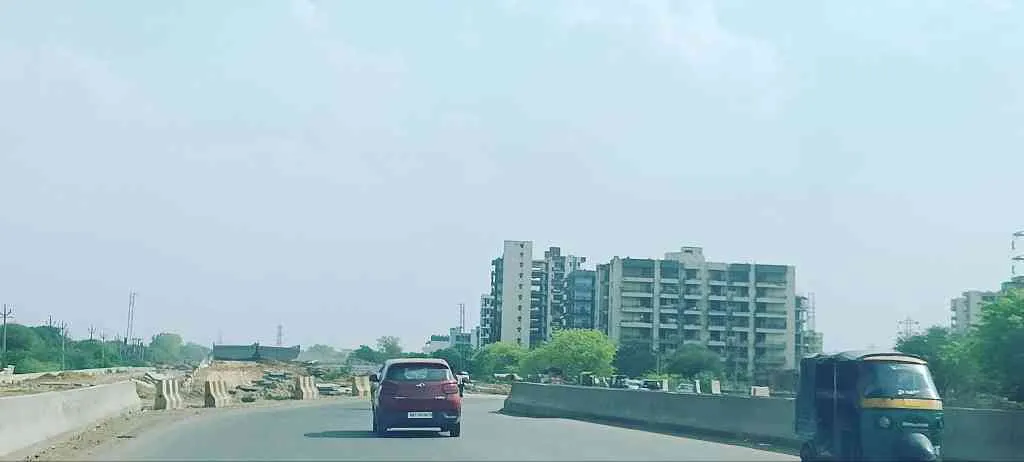
The government has taken some measures to mitigate the impact of construction on air quality, such as using dust control measures like green cover along the route. However, there is still a need for rigorous monitoring and enforcement to ensure that the project does not worsen air pollution levels.
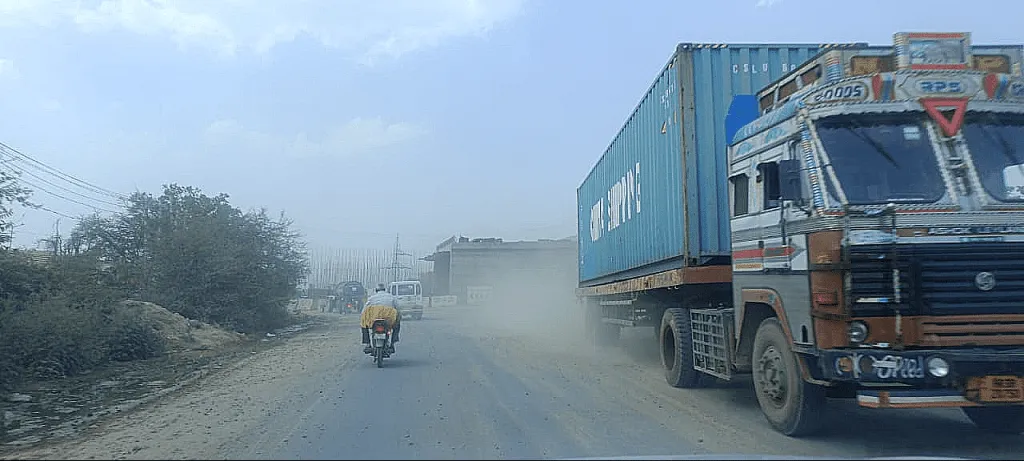
Business getting affected
The construction of the expressway has also led to a significant negative impact on several shops and businesses along the route. This has caused notable distress for the affected business owners. Some have even lost their livelihoods, hence impacting the local economy. The affected shops and businesses include small eateries, automobile repair shops, and other small enterprises.
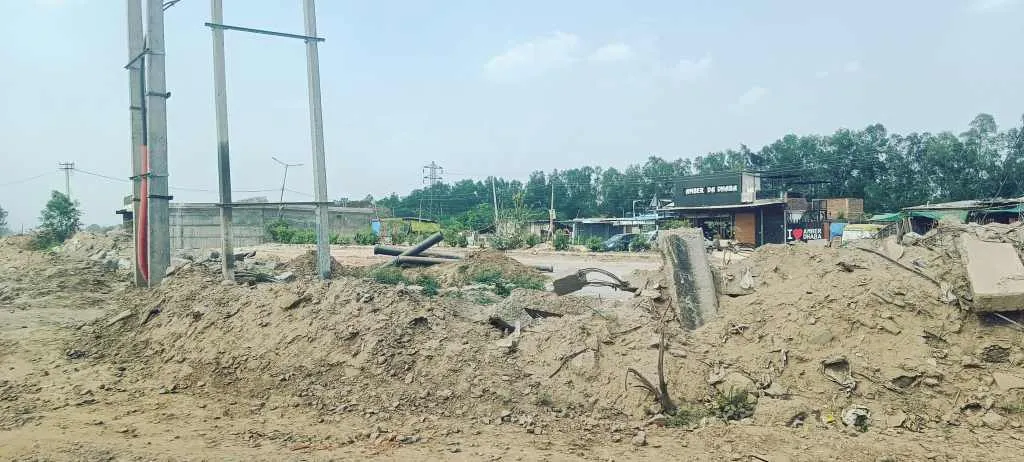
Brijwasi food stall owner runs a small tea shop near the Faridabad belt (Sector 64 chowk). He is now facing the consequences of the construction of the expressway. The number of customers has significantly reduced. Furthermore, most of his products are covered with dust due to the construction work. This has led to a substantial economic backlash for him, as he struggles to make ends meet. Despite the difficulties, Mr. Kumar remains hopeful that the situation will improve once the construction work is complete, and the expressway becomes operational.
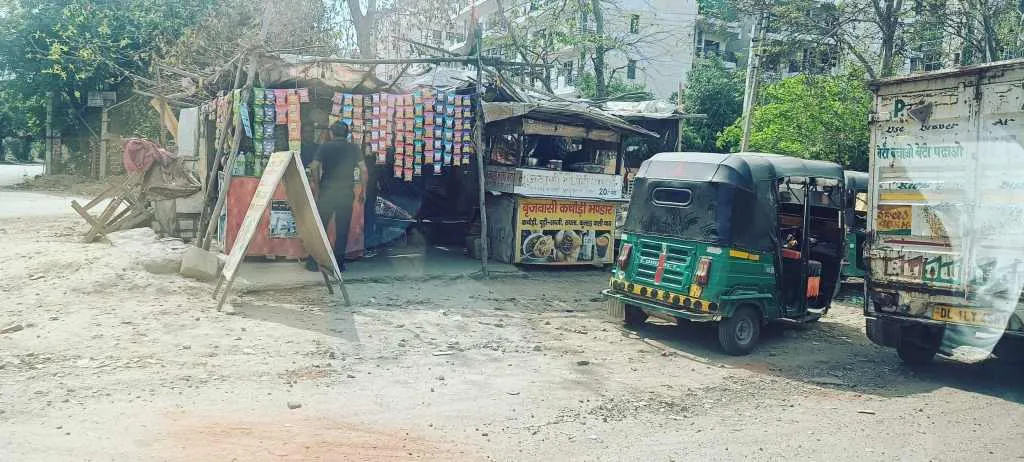
Delays
The construction of the Delhi-Mumbai Expressway has been plagued by delays, with the project running behind schedule. This has led to cost overruns and a significant increase in the project’s budget. The National Highways Authority of India (NHAI) faced protests from farmers and environmentalists over the acquisition of land for the project.
The construction was also stalled due to the COVID-19 pandemic, which led to a shortage of workers and materials. As a result, the project is facing a significant delay in completion, causing increased traffic congestion and air pollution in the area.
Roadblocks around the Faridabad belt
The construction work around the Faridabad belt has been particularly challenging, with roadblocks causing significant problems for the citizens. The area is home to several residential colonies and industrial units, which have been affected by the construction activities.
The roadblocks have led to traffic congestion and long delays, with some commuters reporting that their daily commute has been extended by several hours.
The government has tried to mitigate the impact of roadblocks by implementing alternative routes and diverting traffic. However, these measures have not been entirely effective. And, there is still a need for more comprehensive planning to ensure that the construction work does not cause undue inconvenience to the citizens.
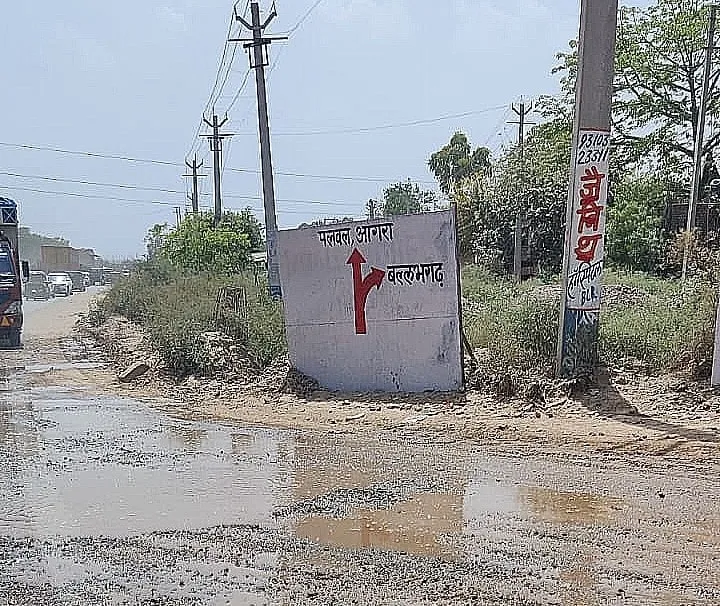
As a resident of the Faridabad belt, I have personally experienced the impact of the Delhi-Mumbai Expressway construction on my daily life. One day, I was seriously unwell and needed urgent medical attention.
However, I was unable to reach the hospital on time due to a roadblock caused by the construction work. The traffic was diverted to a one-way route, causing significant delays and adding to my distress. What should have been a short 20-minute journey ended up taking me over an hour to reach the hospital? This delay caused me significant anxiety, as I was worried about reaching the hospital in time to receive treatment, which further aggravated my condition.
The traffic congestion and delays caused by the construction work have made it incredibly challenging for residents of the Faridabad belt to go about their daily lives, and I hope that the government takes swift action to address these issues.
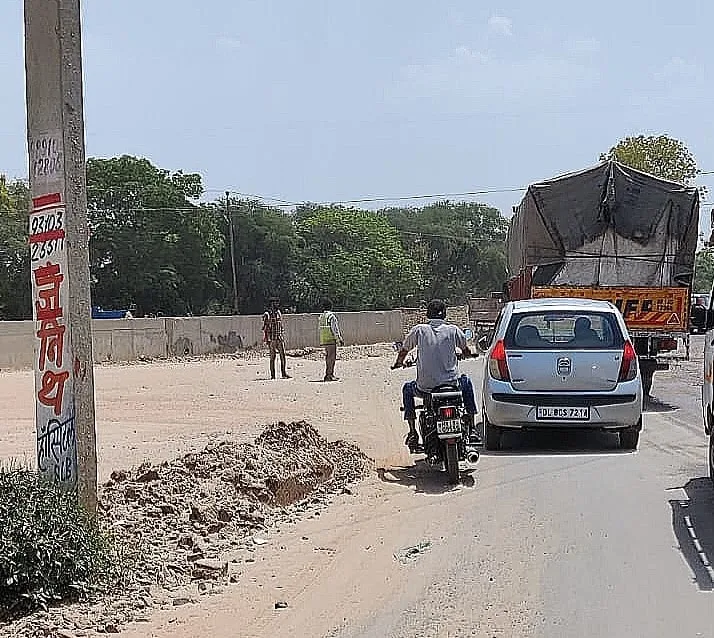
The Sohna belt, which falls along the route of the Delhi-Mumbai Expressway, has been particularly contentious. The project involves the construction of a 90-kilometer stretch of the expressway, passing through several villages and towns in the Sohna belt.
Conclusion
The Delhi-Mumbai Expressway is a significant infrastructure project that has the potential to transform road connectivity in India. However, the project has been plagued by several issues, including concerns about air pollution, effects on local shops, delays, and roadblocks around the Faridabad – Sohna belt.
The government needs to take urgent measures to address these issues and ensure that the project is implemented in a manner that does not cause undue hardship to the citizens. This includes stricter monitoring and enforcement of environmental regulations, timely completion of the project, and comprehensive planning to minimize the impact of construction work on traffic and road connectivity.
Keep Reading
- In reality who initiated the construction of Purvanchal Expressway?
- Farmer protest: Delhi-Meerut Expressway opens for Ghaziabad after 50 days
- Gati Shakti projects and their environmental implications
Follow Ground Report for Climate Change and Under-Reported issues in India. Connect with us on Facebook, Twitter, Koo App, Instagram, Whatsapp and YouTube. Write us at GReport2018@gmail.com






